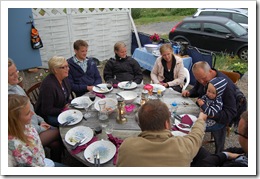Synchronization for Consultants – How I Got It to Work
September 22, 2009
OK – this has been quite a journey, and I’m not completely satisfied with the solution yet, but it works. Along the way, I’ve had to delete all my contacts and calendar items on my phone about five times… Brrr – equally scary each time.
Here’s the problem: As a consultant, I work for customers who have their own Exchange Servers (or similar). When I start at a customer, I’m given an account, for example, marcus.hammarberg@anycustomer.se. My coworkers at AnyCustomer start sending me emails and making appointments in my AnyCustomer calendar.
I also work for Avega, which provides me with an email address and calendar.
Lastly, I have a private Gmail account for personal stuff.
So, I have three synchronization issues: mail, contacts, and calendar items. Here’s how I’m handling them right now. I hope a better solution will present itself later.
Contacts
I keep all my...
 Albert enjoying himself on the seashore - he stayed here most days…
Albert enjoying himself on the seashore - he stayed here most days… Here we are on our way into the water. Again.
Here we are on our way into the water. Again. Elin and I went to Liverpool for a short holiday without Albert. Together with Kalle and Fanny, here is a picture from the shores of the Irish Sea.
Elin and I went to Liverpool for a short holiday without Albert. Together with Kalle and Fanny, here is a picture from the shores of the Irish Sea. Albert in Västra Bodarna where his cousin Hilda lives. She wasn’t born yet, but she is now.
Albert in Västra Bodarna where his cousin Hilda lives. She wasn’t born yet, but she is now. And...
And...
![overview-gallery4-20090608[1]](/img/overview-gallery4-20090608%255B1%255D_thumb%255B3%255D.png)